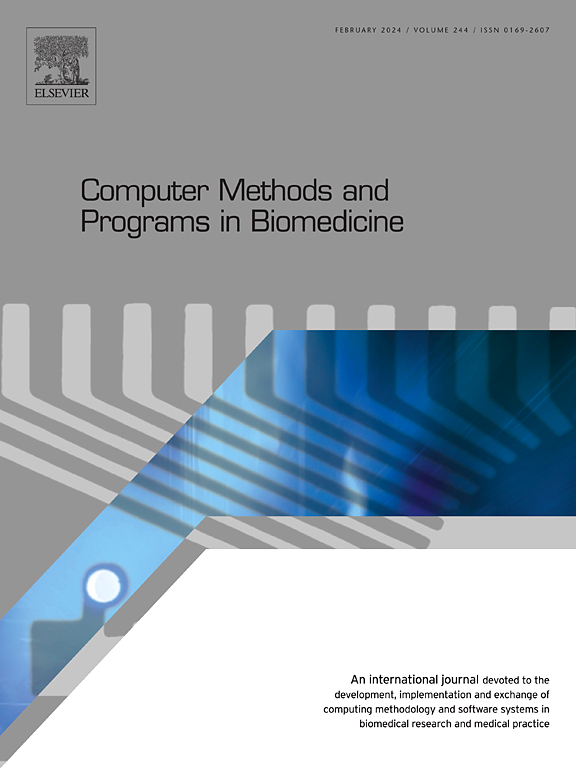Modeling the coupling between stent degradation and vascular remodeling considering the effects of mechanical stimuli and geometric interaction
IF 4.9
2区 医学
Q1 COMPUTER SCIENCE, INTERDISCIPLINARY APPLICATIONS
引用次数: 0
Abstract
Background and objectives
The degradation of stents and vascular remodeling are processes involving mechanical and geometric interactions. However, in previous studies, these two processes were treated as independent. This study aims to develop a finite element coupling model based on the constitutive and stress-growth relationships to investigate the impact of mechanical stimuli and geometric interactions on the coupled process.
Methods
A stent degradation model that incorporates multiple corrosion factors and a vascular remodeling model that considers artery stress stimuli were first established. Then, these two models were coupled on spatio-temporal scales, and the mechanical and geometric interactions between them were carefully configured by setting material properties and corrosion properties for the individual element as well as marking the element status. Based on this coupling model, we simulated stent degradation and vascular remodeling under different mechanical and geometric interaction conditions.
Results
Compared to constant initial stress stimuli following stent deployment, dynamic stress stimuli during the coupling process prolonged stent fracture time by 4 % due to reduced stress corrosion and altered the neointima volume trend from a continuous linear increase to a gradual convergence by mitigating artery damage. Furthermore, the dynamic changes in geometric interaction during coupling extended stent fracture time by 24 % through the neointima's coverage of the stent.
Conclusions
These findings highlight the significant influence of dynamic mechanical stimuli and geometric interactions on the coupling outcomes. Therefore, it is crucial to incorporate these factors into the coupling model. Ultimately, this model may provide a biomechanical foundation for understanding the supporting performance, degradation rate, and in-stent restenosis of biodegradable vascular stents in clinical settings.
考虑机械刺激和几何相互作用的支架降解与血管重构耦合建模
背景和目的支架的降解和血管重构是一个涉及力学和几何相互作用的过程。然而,在以往的研究中,这两个过程被认为是独立的。本研究旨在建立基于本构关系和应力增长关系的有限元耦合模型,以研究力学刺激和几何相互作用对耦合过程的影响。方法首次建立包含多种腐蚀因素的支架降解模型和考虑动脉应激刺激的血管重构模型。然后,将这两个模型在时空尺度上进行耦合,并通过设置单个元素的材料特性和腐蚀特性以及标记元素状态来仔细配置它们之间的力学和几何相互作用。基于该耦合模型,我们模拟了不同力学和几何相互作用条件下支架的降解和血管重构。结果与支架部署后的恒定初始应力刺激相比,耦合过程中的动态应力刺激减少了应力腐蚀,使支架断裂时间延长了4%,并通过减轻动脉损伤改变了内膜体积从连续线性增加到逐渐收敛的趋势。此外,耦合过程中几何相互作用的动态变化通过新生内膜对支架的覆盖使支架断裂时间延长了24%。结论动态力学刺激和几何相互作用对耦合结果有显著影响。因此,将这些因素纳入耦合模型是至关重要的。最终,该模型可为临床理解可生物降解血管支架的支撑性能、降解率和支架内再狭窄提供生物力学基础。
本文章由计算机程序翻译,如有差异,请以英文原文为准。
求助全文
约1分钟内获得全文
求助全文
来源期刊

Computer methods and programs in biomedicine
工程技术-工程:生物医学
CiteScore
12.30
自引率
6.60%
发文量
601
审稿时长
135 days
期刊介绍:
To encourage the development of formal computing methods, and their application in biomedical research and medical practice, by illustration of fundamental principles in biomedical informatics research; to stimulate basic research into application software design; to report the state of research of biomedical information processing projects; to report new computer methodologies applied in biomedical areas; the eventual distribution of demonstrable software to avoid duplication of effort; to provide a forum for discussion and improvement of existing software; to optimize contact between national organizations and regional user groups by promoting an international exchange of information on formal methods, standards and software in biomedicine.
Computer Methods and Programs in Biomedicine covers computing methodology and software systems derived from computing science for implementation in all aspects of biomedical research and medical practice. It is designed to serve: biochemists; biologists; geneticists; immunologists; neuroscientists; pharmacologists; toxicologists; clinicians; epidemiologists; psychiatrists; psychologists; cardiologists; chemists; (radio)physicists; computer scientists; programmers and systems analysts; biomedical, clinical, electrical and other engineers; teachers of medical informatics and users of educational software.
 求助内容:
求助内容: 应助结果提醒方式:
应助结果提醒方式:


